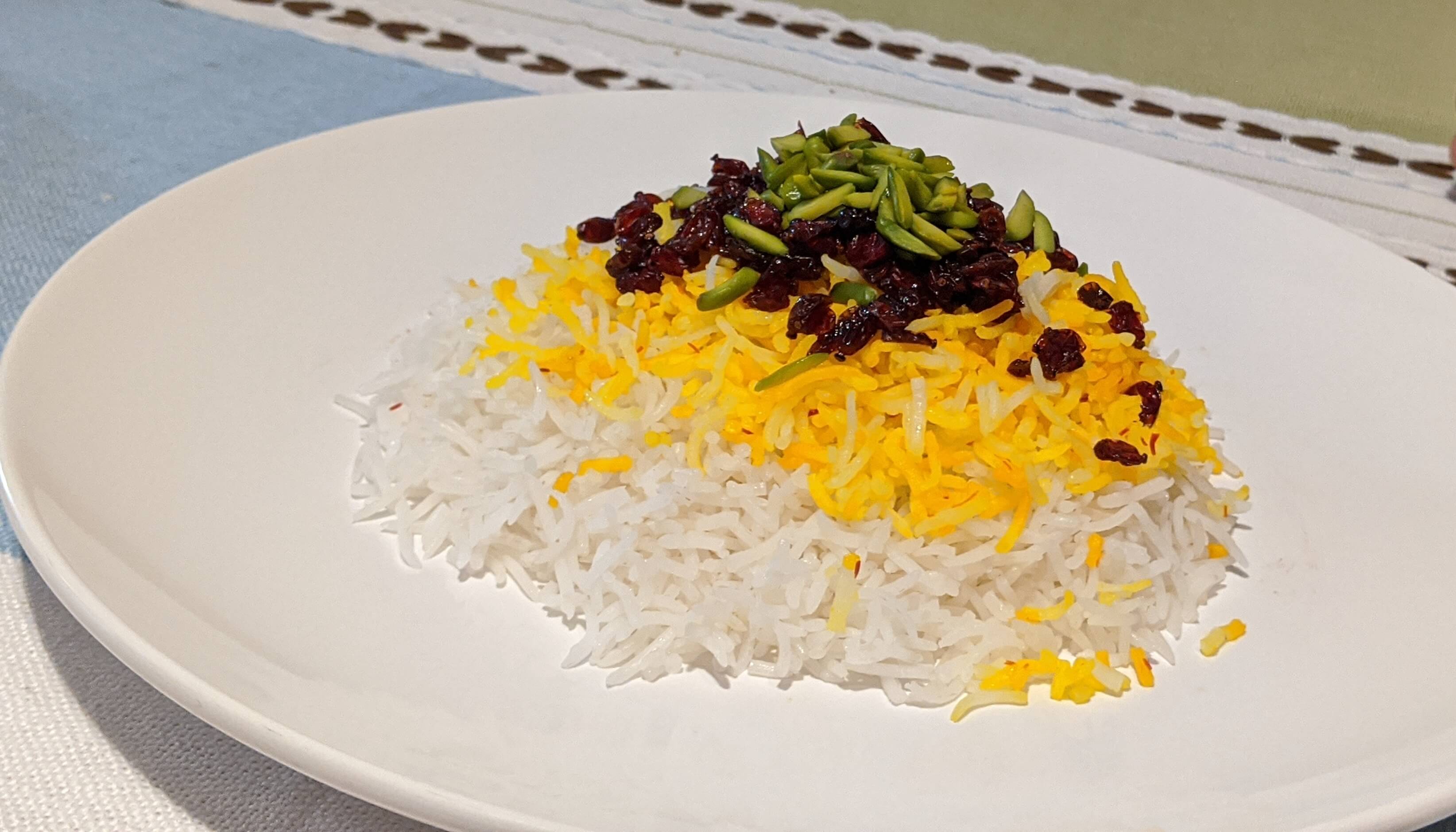Zereshk Polo Recipe
The Iranian zereshk polo recipe reminds me of the recipes of Biryani and Pulao from countries like India, Pakistan, and Bangladesh. This does not come as a surprise because these regions were heavily under the Persian influence in the past. Unlike many parts of the world where rice is deliberately sticky or overcooked, Iranians want their rice to be rather separated when served. As an Indian, I can testify how tricky this can be as I have myself made Biryani and Pulao many times and it disappoints me if the rice ends up being overcooked. What is also important is the use of Basmati rice in these recipes. It is important to have good quality Basmati rice along with good barberries, pistachios and saffron to pull this dish off convincingly. While I as an Indian always have access to good Indian basmati rice, my Iranian friend gave me some barberries, pistachios and saffron that her mom had sent her from Tehran to make this dish. I received this recipe from this friend who got it from her mom. So, here goes the recipe.

| Prep Time | Cooking Time | Total Time |
|---|---|---|
| 15 min | 45 min | 1 hr |
| Servings | Cal per serving |
|---|---|
| 4 | 489 cal |
Ingredients:
- 500g basmati rice
- Few strands of Iranian saffron
- 1 lemon
- 50g of Iranian barberries
- 20g of Iranian pistachios
- 1 bay leaf (optional)
- 3-4 cloves (optional)
- 2-3 cardamoms (optional)
- 1 cinnamon (optional)
- 1 star anise (optional)
- Few drops of oil
- A couple of pinches of salt
- 1 medium/large potato sliced (optional)
Instructions:
- Wash the basmati rice thoroughly until excess starch is removed and soak it in water for about 30 minutes at least. Remove the tiny stems from the barberries and soak them in water as well. Take a few strands of saffron, crush and soak them in 20ml of boiled water.
- In a huge pot, boil some water with whole spices such as cardamom, cinnamon, bay leaf, star anise, and cloves. These are optional but adds aroma to the rice. Add some salt, one or two slices of lemon, and some oil to it as well. To this mix, add the rice that you had soaked earlier. The thumb rule for cooking basmati rice is to have two cups of water for one cup of rice. So, this recipe must have about 2.5 to 3 cups of water for every cup of rice.
- When the rice is about 70% cooked, strain all the excess water out and remove all the whole spices and slices of lemon from it.
- Take another pot, slice some potatoes with some salt rubbed on to them and add them at the bottom of the pot with some oil. You can skip the potatoes and do this with extra rice as well. This part that will turn out to be crunchy from the bottom later is known as Tahdig. On top of this, add the rice that was so far cooked to 70%. Cover the lid of the pot and cook it on low heat for about 20 to 30 minutes. Do not burn the Tahdig completely. It just needs to be a little fried from the bottom and crunchy in taste. The Tahdig part is completely optional but this is what the Iranians routinely apparently do.
- Remove the excess water from the soaked barberries and fry them in medium heat with lemon extract for 3-5 minutes. Make sure you do not burn them and keep the heat low if your gas stove is powerful.
- Once the rice is cooked, take some rice from the top in a different bowl and mix it with saffron. You should see a beautiful yellowish color to your rice.
- Serve the rice on a plate, add some extra saffron rice, barberries and pistachios.
Enjoy your zereshk polo with kebabs, tomato chicken curry or any other curry of your choice. The Iranians usually have it with kebabs or tomato-chicken stew/curry. My other Indian friend and I had it with paneer butter masala and it goes equally well. So, vegetarian or not, you can enjoy this lovely rice recipe from Iran with a curry of your own choice.